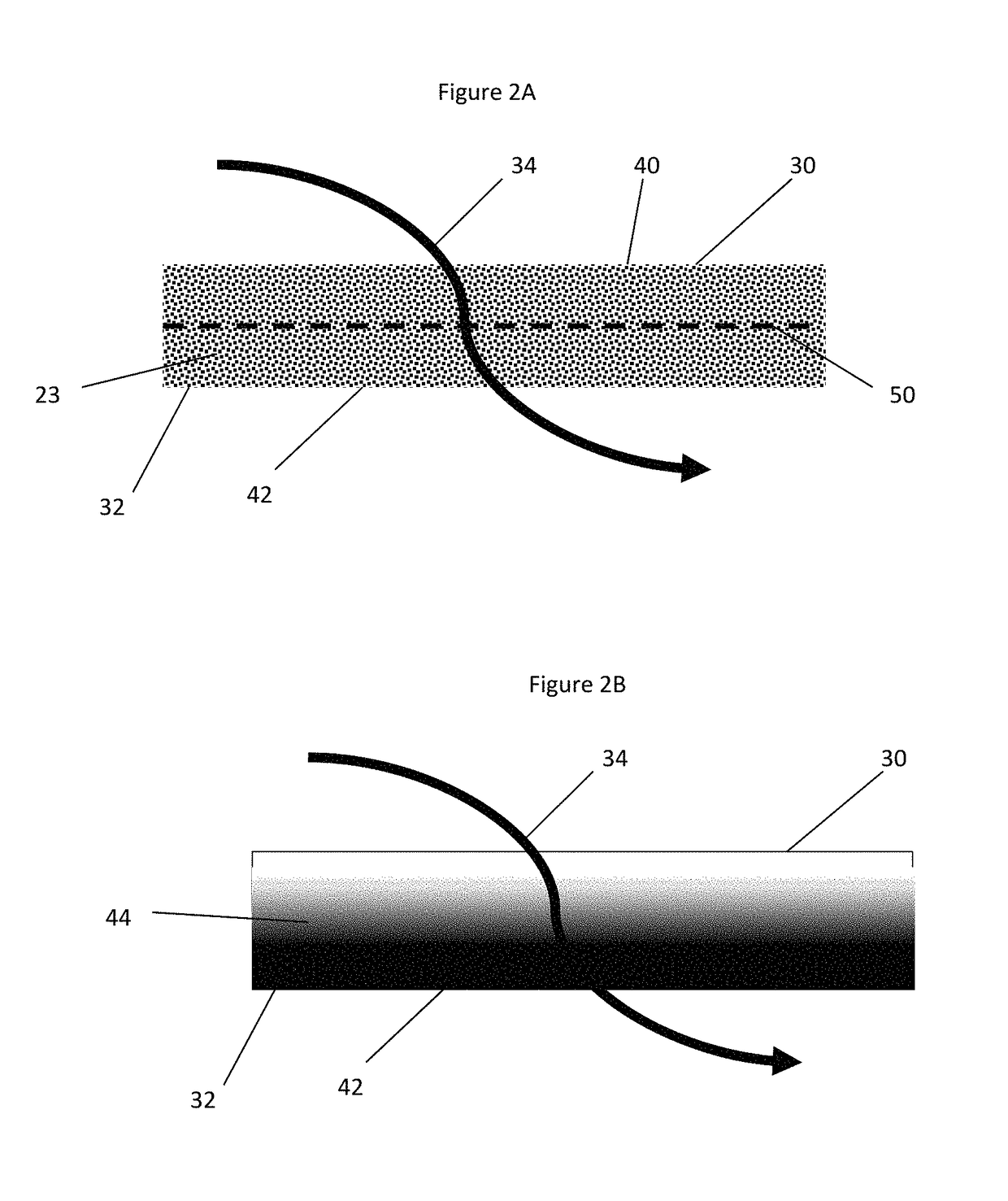Catalyzed filter for treating exhaust gas
a technology of catalyst filter and exhaust gas, which is applied in the direction of physical/chemical process catalyst, machine/engine, separation process, etc., can solve the problems of higher backpressure and soot load backpressure, and achieve the effect of reducing the concentration of nox
- Summary
- Abstract
- Description
- Claims
- Application Information
AI Technical Summary
Benefits of technology
Problems solved by technology
Method used
Image
Examples
example 1
Diesel Particulate Filter with Catalyst Coated Outlet
[0065]A catalytic washcoating having a copper impregnated molecular sieve having a CHA framework was washcoated from the outlet side of a honeycomb-type wall-flow filter constructed primarily of cordierite and having 300 cpsi and a wall thickness of 12 mils (0.3 mm) and then dried. Scanning Electron Microscope (SEM) imaging confirmed that the catalyst coating remained on the outlet side and interior portion of the filter wall. The inlet side of the filter wall remained free of catalyst coatings.
[0066]The washcoat was applied in an amount sufficient to form a catalyst loading of about 1 g / in3. The catalyst loading had a d50 particle size distribution of about 4.22 μm.
example 4
Comparative Backpressure Performance (Inlet vs. Outlet Coatings)
[0070]The procedures described in Examples 1-3 and Comparative Examples A-B were repeated, except that the catalyst coating was applied from the inlet side of the filter. The procedures described in Examples 1-3 and Comparative Examples A-B were again repeated, except that half of the catalyst coating was applied to the inlet side of the filter and half of the catalyst coating was applied to the outlet side of the filter. Ambient temperature air was passed through the filter at a rate of 400 cubic feet per minute (CFM). Soot was gradually introduced upstream of the filter and allowed to accumulate on the inlet side of the filter and the pressure differential across the filter (e.g., the filter's backpressure) was recorded as the soot level increased. The soot loaded back pressure (SLBP) of each filter was compared at a soot loading of about 2 to about 9 grams per cubic inch to determine which catalyst coating orientatio...
PUM
| Property | Measurement | Unit |
|---|---|---|
| pore size | aaaaa | aaaaa |
| mean pore size | aaaaa | aaaaa |
| porosity | aaaaa | aaaaa |
Abstract
Description
Claims
Application Information
 Login to View More
Login to View More - R&D
- Intellectual Property
- Life Sciences
- Materials
- Tech Scout
- Unparalleled Data Quality
- Higher Quality Content
- 60% Fewer Hallucinations
Browse by: Latest US Patents, China's latest patents, Technical Efficacy Thesaurus, Application Domain, Technology Topic, Popular Technical Reports.
© 2025 PatSnap. All rights reserved.Legal|Privacy policy|Modern Slavery Act Transparency Statement|Sitemap|About US| Contact US: help@patsnap.com



